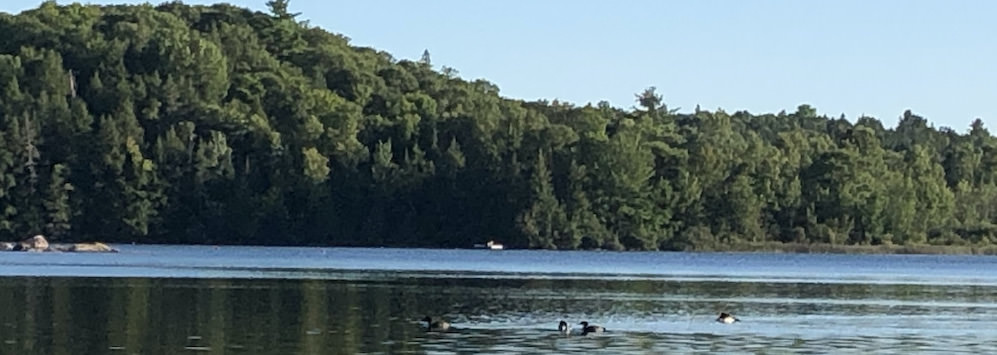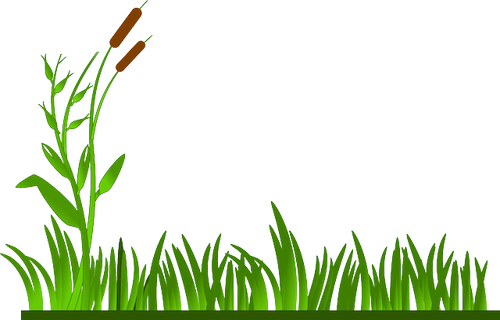April 9, 2022 —The non-profit environmental organization
ABV des 7 presented a well attended Zoom webinar for residents on the morning of April 9th. The objective was to present the rationale, and make recommendations, based on their recently released report on the condition of Lac Gauvreau and its shoreline. The report was commissioned by the Enviro Lac Gauvreau owners association.
Based on onsite observations and scientific evaluations, biologist Jean-François Ouellet, M. Env., who is the General Manager of
ABV des 7, assured that much can be done to preserve and restore lake health. In presenting the organization's report, his prime recommendation was the preservation and restoration of the lake's riparian (shoreline) buffer.
What role can property owners play?The report emphasized that restoration of the lake's shoreline is one of the most important measures residents can take to avoid nutrients flowing into the water, a strategy that is vital to preventing further premature aging of Lac Gauvreau.
Our lake is aging quicklyAccording to the report, Lac Gauvreau is aging prematurely. The lake's
eutrophication (rate of aging) ranges from the
mesotrophic classification all the way to the extreme end of the more serious
eutrophic ranking, especially in Parent Creek and at its outflow. Eutrophication is the process in which lakes receive nutrients (phosphorus and nitrogen) and sediment from the surrounding watershed, and become more fertile and shallow. The higher a body of water rates on the
Trophic state index, the more quickly the lake ages. A process that usually takes hundreds of years can be accelerated significantly by the presence of high nutrient levels. The report cautions that climate change has become a compounding factor that makes it even more important to take action now.
Mesotrophic lakes are commonly clear water lakes with beds of submerged aquatic plants and medium levels of nutrients.
Eutrophic lakes, on the other hand, contain excessive nutrients—especially nitrogen and phosphorus—which promote the growth of algae blooms and aquatic plants such as Eurasian watermilfoil. Lac Gauvreau exhibits telltale evidence of a lake that is suffering from premature aging.
Generally, phosphorus intake driven by anthropogenic (human) causes can come from agricultural drainage, non-compliant septic tanks, and impermeable infrastructures close to the lake (structures that prevent the free flow of water). A watershed map of the area clearly shows that a good amount of the pollution entering Lac Gauvreau is from agricultural productivity, mainly via Parent Creek. This is by no means the sole source, however, and other contributing factors must be addressed as well if the lake is to be brought back into balance.
Call for Action: Overview of observations
Findings:- The state of the lake is much worse than what biologists originally thought;
- Clarity tests indicate that the water is not clear;
- The lake shoreline is neglected in many locations;
- The lake does not have a seasonal mixing to oxygenate deep water;
- There are many unnatural beaches created by sand that has been brought in;
- Parent creek is subject to pollution from agricultural runoff which ends up in the lake;
- The Whippoorwill campsite is too close to the shoreline;
- Blue-green algae bloomed last spring and summer and into the 2021 fall season;
- Milfoil has spread significantly since the organization's last inventory and continues to proliferate;
- The human population around the lake is VERY dense. In 2021, there were 183 cottages, including 84 permanent within a radius of 150 meters around the lake;
- Since 50% of these cottages have septic tanks built before 2000, it is recommended that they be checked.
Who is ABV des 7 and what is its mandate?For several years,
ABV des 7 has been actively working with area stakeholders such as lake associations—including Enviro Lac Gauvreau—as concerns mount about environmental issues.
ABV des 7 consists of a team of five specialists in stakeholder engagement, geomatics, limnology, and ecology. Their activities and services include:
- Preventing water pollution;
- Monitoring water bodies;
- Protecting wetlands;
- Building community capacity;
- Fighting against invasive species;
- Engaging and educating people.
ABV des 7 has no administrative authority and is not associated with any government body. It is simply a not-for-profit group that, upon request, makes recommendations on the basis of environmental assessments.






































































